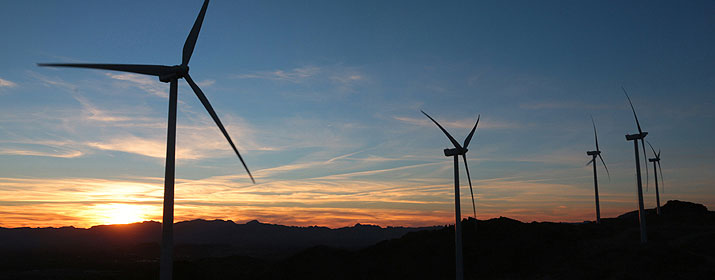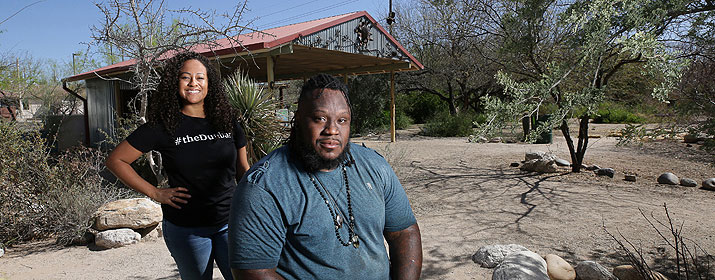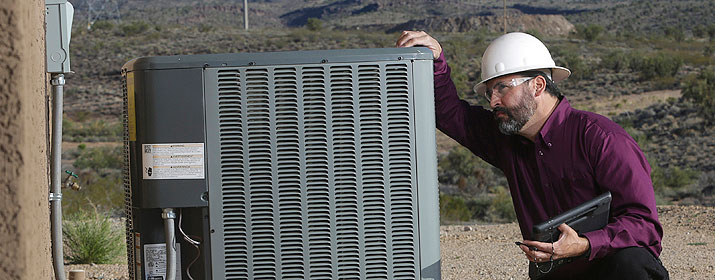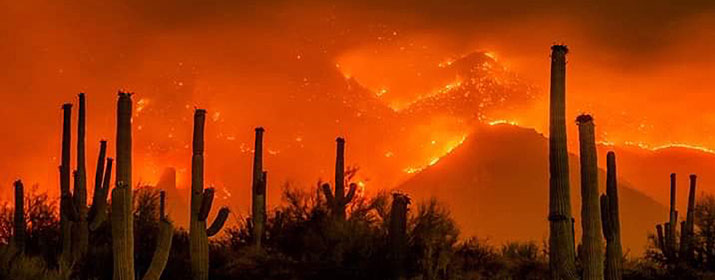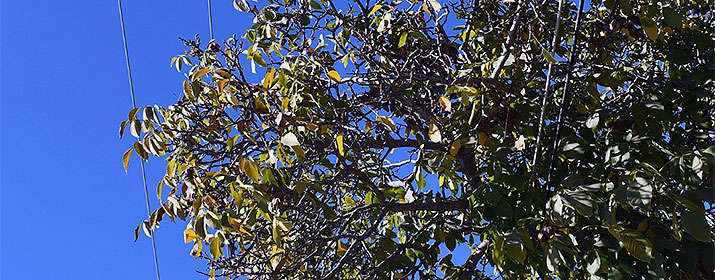
Driving sustainability is one of our corporate values, and it commits us to being good stewards of all of our natural resources, including trees, cacti and grasses. Here are six sustainable ways that Tucson Electric Power responsibly manages vegetation to protect the environment, maintain service reliability and help customers save energy and money.
1. Trimming Trees
Over a six-year cycle, TEP trims more than 120,000 trees alongside 2,700 miles of our lower-voltage power lines. This helps ensure that trees and shrubs don’t interfere with our lines, which can cause power outages and create a fire hazard.
“We’re not required to do this, but we do it to improve safety and reliability and customer service,” said Jim Bennett, TEP Maintenance Planner. “Customers can help ensure reliability by keeping their trees more than 10 feet away from power lines.”
Bennett said TEP trims tree limbs to the sustaining lateral line, where the branch meets the tree’s main trunk, or a sustaining branch, which is healthiest for the tree. “It may not always look the prettiest, but it’s best for the tree and prevents new branches from growing toward our power lines.”
Trimming back vegetation keeps our crews busy, considering that eucalyptus, mesquite, palo verde and other fast-growing trees can grow 3-5 feet every year. Rather than disposing of these trimmings as trash, TEP saves landfill space and recycles this green waste into mulch through a longstanding partnership with Civano Nursery.
2. Preserving Cacti
Whenever TEP must build new power lines or substations in potentially sensitive environmental areas, we do everything we can to mitigate our impact on the local ecosystem, according to TEP’s Leslie Carpenter, Senior Environmental & Land Use Planner.
“Arizona has a unique set of native plant laws to protect our state’s natural beauty,” she said, “so we’re committed to avoiding native cacti and other plants or moving them out of the right-of-way when it’s feasible and replanting them elsewhere to keep the natural environment intact. That’s just how we do business and it’s the right thing to do.”
This respectful approach to the environment helps us leave a light footprint. “The more we can keep natural landscape intact, the better it’s protected against wildfire and invasive plants. An intact environment is better suited to guard against potentially harmful influences,” Carpenter noted.
Before our projects are approved and permitted, local jurisdictions typically require a mitigation or landscaping plan to be approved. Our plans include relocating salvaged cacti to the surrounding area or donating them to parks and public spaces to protect their value for wildlife and beautify the community.
Over the years, TEP has relocated thousands of saguaros, barrel cactus and chollas with assistance from our employee volunteers and the Tucson Cactus and Succulent Society. Last spring, hundreds of cacti and plants were relocated from the site where our new Raptor Ridge community solar array is being built.
3. Saving Saguaros, Beating Back Buffelgrass
Removing invasive species that harm native vegetation is important for maintaining the natural habitat. For years, TEP employees have teamed up with local environmental and conservation groups to remove buffelgrass from our Sonoran Desert landscape. TEP crews also remove buffelgrass from easements, our construction sites and areas where we replace poles.
Introduced to Arizona in the 1930s to control erosion and feed cattle, this African grass spreads rapidly, choking out saguaros and other native plants. It is also highly flammable, creating a wildfire risk. Stands of buffelgrass have reduced the natural firebreak between higher elevation forests and Tucson’s urbanized areas.
“We will see the after-effects of the 2020 Big Horn fire for years because it destroyed 2,000 saguaros. Buffelgrass will change the landscape of the Catalina Mountains for a long time,” Carpenter said. “It’s an ongoing effort to keep the grass from spreading, but we’re doing our part to control this and other invasive grasses.”
Most recently, 18 TEP volunteers helped remove buffelgrass from Sabino Canyon on Jan. 29 as part of the Save Our Saguaros event during Beat Back Buffelgrass Month.
4. Recycling Green Waste
TEP was one of the first utilities in the U.S. to begin recycling and composting our green waste in 2004. Before forming our partnership with Civano Nursery, heaps of tree trimmings sat in the corner of our yard at the Irvington generating station before being taken to the landfill.
Now, we’re keeping about 30,000 cubic yards of tree branches, leaves and other green waste out of local landfills each year by transforming it into nutrient-rich mulch.
All of the trimmed branches are taken to our local Sundt Generating Station, where they are chipped twice and composted with water and bacteria. The process produces about 12,000 cubic yards of compost annually. Within six weeks, the mulch is sent to Civano’s Sahuarita location, where it’s used to feed trees, shrubs and perennial plants, 95 percent of which are planted in Pima County.
“We were one of the first in the nation to compost our green waste and now other utilities have followed our lead,” said Bennett. “With Civano’s recent purchase of a larger grinder, we’re able to keep up with production and produce a very good product instead of sending our green waste to the landfill.”
5. Preventing Wildfires
Twice a year, Kasy Schug boards a helicopter and buckles in. For four days, TEP’s Transmission Vegetation Project Manager will visually inspect all of TEP’s 1,500 miles of transmission lines that span from Farmington, NM to Glendale, Ariz.
Schug is looking for vegetation encroaching on our transmission lines, which carry extremely high-voltage electricity over long distances to communities.
“Having a consistent inspection process allows us to monitor heavily vegetated areas and follow-up with ground patrol,” Schug said. “Watching vegetation growth patterns in our rights-of-way is important because we want to maintain 300-ft. of clearance with our transmission lines.”
Sometimes, clear-cutting a large swath of forested area around our lines is necessary to create that clearance and a clean firebreak. From 2009 to 2014, it was necessary to cut vegetation to ground within our transmission line rights-of-way along the Arizona-New Mexico border.
These aerial inspections are just part of our year-round efforts to manage vegetation around our facilities to keep communities, our power lines and equipment, and the environment safe from devastating wildfires.
6. Promoting Natural Shade
Since 1992, TEP has distributed more than 152,000 shade trees through our Trees for You program. Desert-adapted shade trees are either sold at a discount or given to customers, neighborhoods and community groups throughout Tucson to create natural shade. This helps customers reduce energy usage by keeping structures cooler in the summer.
These trees will grow to create natural shade canopies that mitigate the heat island effect. They also provide a habitat for wildlife while absorbing carbon dioxide, helping to mitigate climate change.
TEP residential customers may order up to three 5-gallon shade trees for a discounted price of $5 each by logging into My Account. For more information on our trees program and planting and care instructions, visit tep.com/trees-for-you.

